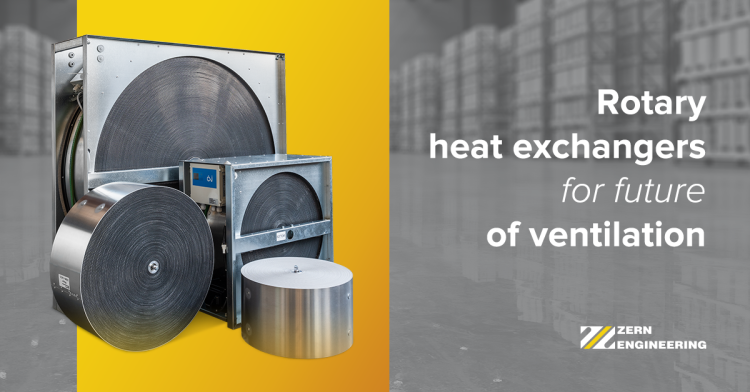| Rotary heat exchangers – a smart step toward the future of ventilation |

As HVAC systems evolve to meet growing demands for energy efficiency, indoor air quality, and sustainability, choosing the right heat recovery technology becomes a strategic decision. Rotary heat exchangers continue to play a vital role in many modern ventilation applications — thanks to their versatility and well-balanced performance.
Why rotary heat exchangers?
✅ Dual energy recovery – transfers both sensible heat and moisture for improved indoor comfort (when using enthalpy or sorption rotors)
✅ Stable in cold climates – less prone to frost formation compared to plate exchangers
✅ Compact & adaptable – space-saving design with controllable rotor speed and purge options
✅ Humidity control – helps maintain comfortable indoor humidity levels in winter
💡 Rotary heat exchangers come in several types, each suited to different project needs:
🔸 Compared to other technologies
Where rotary heat exchangers work best?
🏢 Commercial and office buildings – year-round ventilation with improved comfort and humidity balance
🌡 Cold climates – frost-resistant operation with consistent energy recovery
🛠 Compact AHUs – perfect for tight spaces
🏭 Industrial and mixed-use facilities – ideal for high-demand and continuous-use systems
🔄 Demand-based systems – dynamic control over rotor speed and purge sectors for seasonal adjustment
⚖️ Efficiency alone isn’t everything
While plate exchangers may excel in dry heat transfer, rotary heat exchangers offer greater adaptability — combining energy savings, humidity control, and operational stability in one compact solution.
At ZERN ENGINEERING, we design and manufacture rotary heat exchangers that support the next generation of smart, efficient, and resilient ventilation systems.
Let’s engineer the air — efficiently.

